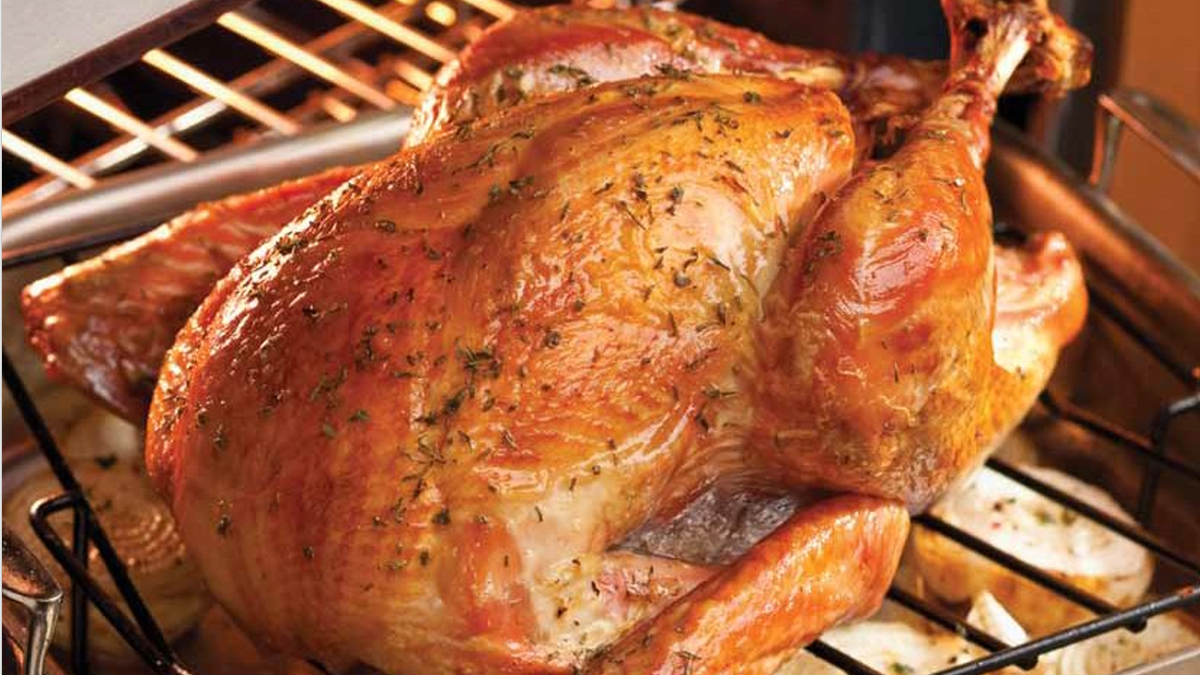Cooking the Christmas Turkey

Looking for safefood's Turkey cooking calculator?
The calculator determines the optimal turkey cooking time for a juicy and safe-to-eat bird. It is based on the research described below.
Download the report
Cooking the Christmas Turkey: Calculation of safe cooking times for stuffed and unstuffed turkeys
Summary
Consumers have often found that following previous recommended cooking times for turkeys resulted in birds with dry and unappetising meat. To determine the optimum cooking time to produce a safe and succulent bird in fan-assisted ovens, safefood commissioned scientific research incorporating cooking trials, sensory quality trials and microbiological challenge tests on stuffed and unstuffed turkeys.
Cooking trials
A number of stuffed and unstuffed turkeys were roasted in fan-assisted ovens. The temperature rises during the cooking process were measured in a number of points in the birds to identify when the cooking temperature reached the point that would kill any dangerous bacteria present. These time-temperature data gave the cooking times required to assure safe cooking and enabled mathematical equations to be derived giving cooking time instructions according to turkey weight. These equations only apply to turkeys cooked in fan-assisted electric ovens.
This research showed that the thickest parts of the breast and thigh meat were the slowest parts of the turkey to cook. In cavity stuffed turkeys the centre of the stuffing was the slowest point to cook.
Sensory trials
Expert sensory panels were used to identify the length of time for which cavity stuffed turkeys should be roasted in order to get the best taste. Cavity stuffed turkeys cooked according to the cooking time instructions developed from the cooking trials gave sensory evaluation scores of 6 and 7. These scores indicate that the cooking instructions produced fairly good to good quality turkey meat according to its appearance, flavour and texture. The equivalent sensory scores for unstuffed turkeys were between 6 and 8 indicating similar quality turkey meat to the cavity stuffed birds.
Microbiological challenge tests
Microbiological challenge tests were undertaken to provide an extra check that the cooking instructions produced cooked turkey that was microbiologically safe. This was preformed by adding a cocktail of five strains of Salmonella and Campylobacter to test turkeys. After cooking, using the cooking times developed in the cooking trials studies, no surviving microorganisms were recovered from any of the birds, either stuffed or unstuffed. This proved that the cooking instructions produced microbiologically safe turkey.
Overall the cooking instructions developed from the project produced microbiologically safe turkeys of fairly good to good sensory quality. The results from this project provide cooking advice for fan-assisted ovens based on sound science and is the basis for recommendations which will help ensure that every turkey (large or small), is cooked sufficiently.
Recommendations for consumers
1. Make sure that the turkey is thoroughly defrosted in the fridge before cooking.
If it is not defrosted it will not cook properly and safely. Once thoroughly defrosted, a previously frozen turkey cooks in the same way as a fresh turkey.
2. Consider cooking the stuffing outside the bird, as this will produce a tastier turkey.
Stuffed turkeys can take a lot longer to cook than unstuffed turkeys. For example, a large (7.5kg) turkey with cavity stuffing takes 30% longer (almost 1½ hours longer) to be properly and safely cooked, than a similar size unstuffed bird. Such longer cooking times can impair the quality of the turkey meat.
3. If you are stuffing the turkey, use no more than 10% of the weight of the unstuffed bird.
If you add too much stuffing, you will need to cook the turkey for longer, and this will affect the quality of the meat. The weight of the stuffing should be no greater than 10% of the weight of the unstuffed bird.
4. Calculate the cooking time based on the weight of your stuffed bird.
To calculate the correct cooking time for your turkey, make sure to use the combined weight of the total oven-ready bird, including the weight of the added stuffing.


